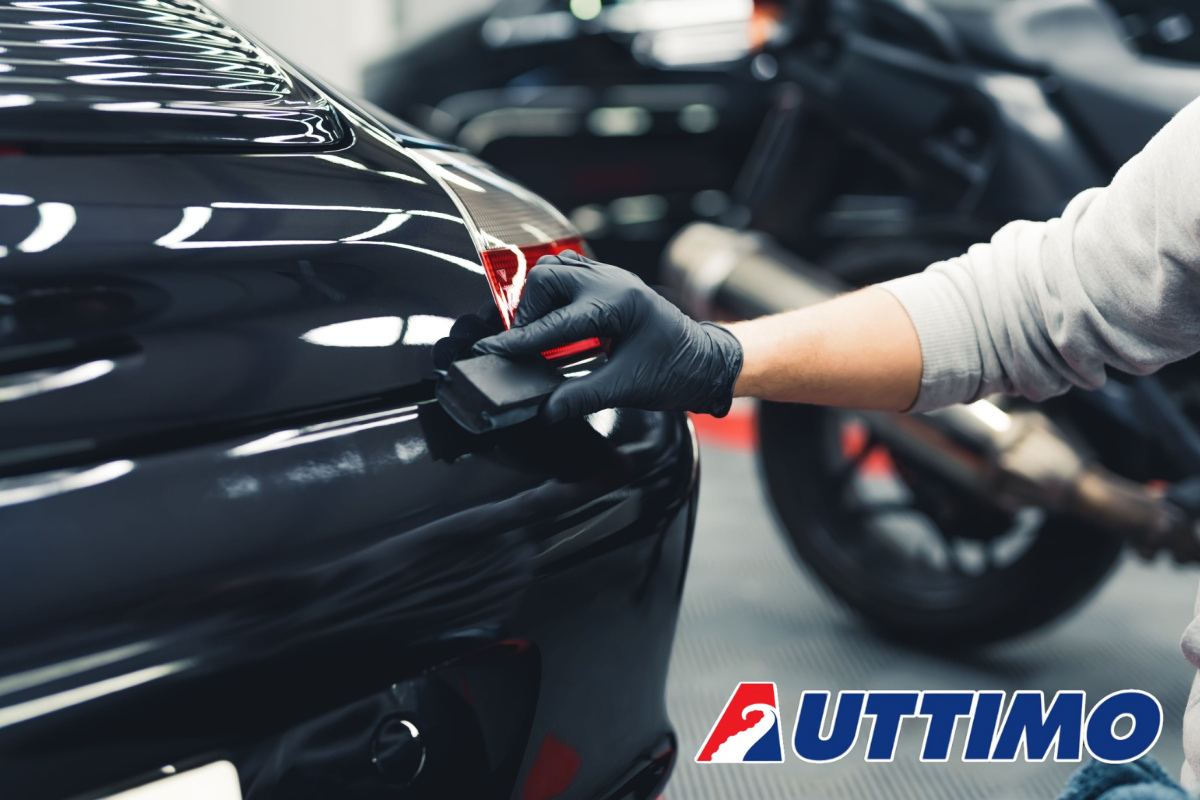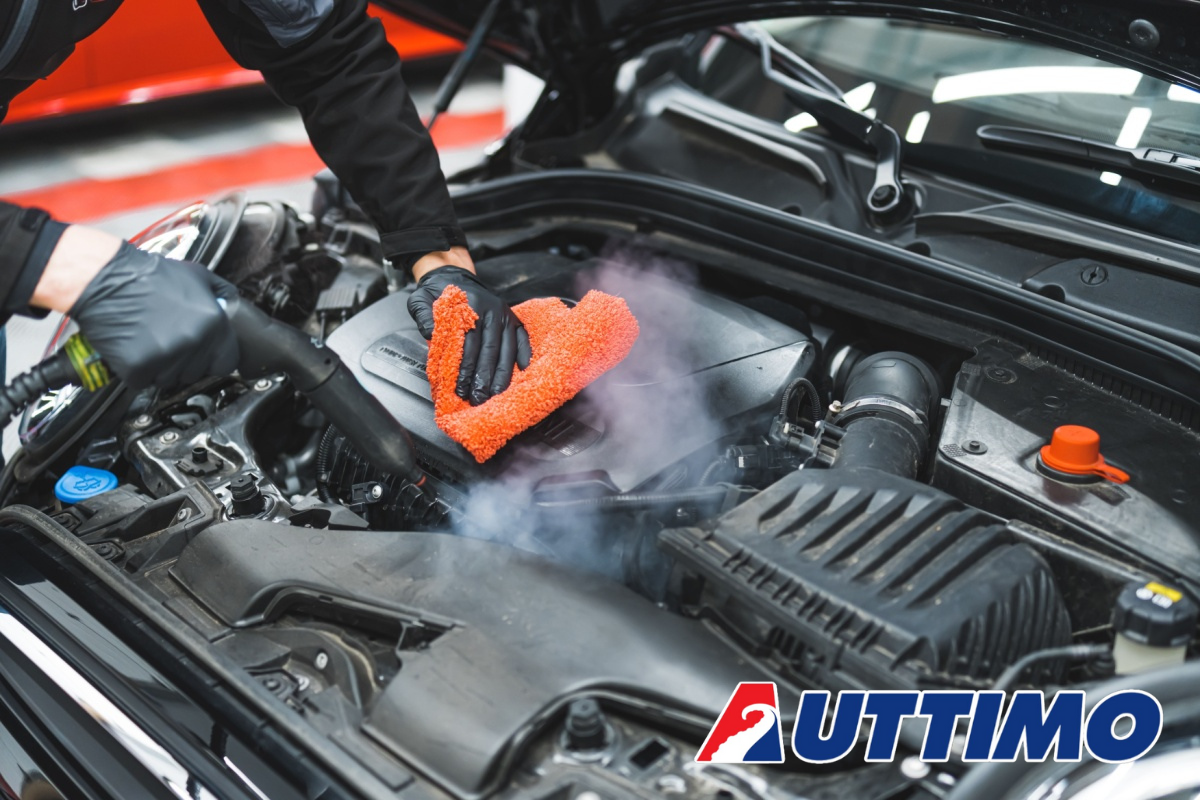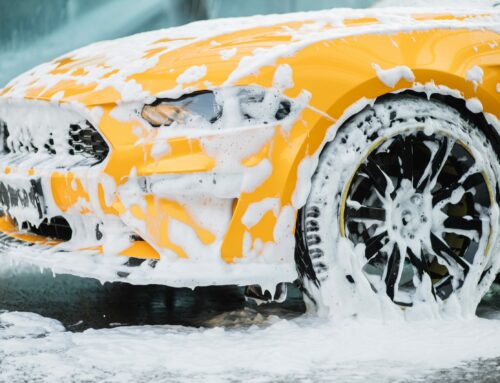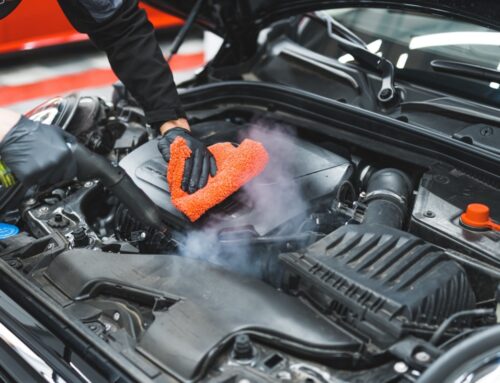Ensuring safety is paramount in the car detailing industry. Implementing comprehensive safety measures not only protects your team but also enhances efficiency and customer satisfaction. Here are ten essential safety measures for car detailing professionals to prioritize:

Personal Protective Equipment (PPE)
Personal Protective Equipment (PPE)
Equip all detailing staff with appropriate Personal Protective Equipment (PPE) such as gloves, safety goggles, and respiratory masks. PPE protects against chemical splashes, airborne particles, and skin contact with cleaning agents, ensuring the safety and well-being of your team members.
Ventilation and Air Quality
Maintain good ventilation in detailing bays and work areas to minimize exposure to fumes and airborne particles. Install exhaust fans or use ventilation systems to circulate fresh air and remove potentially harmful vapors from cleaning products. Adequate ventilation enhances indoor air quality and promotes a safer working environment.

Chemical Handling and Storage
Chemical Handling and Storage
Follow strict protocols for the handling, storage, and disposal of detailing chemicals and cleaning agents. Store chemicals in labeled, tightly sealed containers in designated areas away from direct sunlight and heat sources. Provide training on proper chemical handling techniques to prevent spills, leaks, or accidental exposure.
Ergonomic Workstations
Design ergonomic workstations to reduce the risk of musculoskeletal injuries among detailing professionals. Provide adjustable workbenches, stools, and ergonomic tools to promote proper posture and minimize strain during repetitive tasks such as polishing and vacuuming. Regularly assess and adjust workstations to ensure comfort and safety.

Electrical Safety
Electrical Safety
Adhere to electrical safety standards when using powered detailing equipment such as buffers, vacuums, and pressure washers. Inspect cords and plugs for damage before each use, and avoid overloading electrical outlets. Use Ground Fault Circuit Interrupters (GFCIs) to protect against electric shocks in wet or damp environments.
Slip and Fall Prevention
Implement measures to prevent slips, trips, and falls in detailing bays and customer service areas. Keep floors clean, dry, and free of clutter. Use anti-slip floor mats and signage to highlight wet or slippery areas. Encourage employees to wear non-slip footwear with adequate grip for added safety.

Fire Safety
Fire Safety
Develop and maintain a comprehensive fire safety plan for your detailing facility. Install smoke detectors, fire extinguishers, and emergency exit signs in accessible locations. Conduct regular fire drills and provide training on fire prevention and evacuation procedures to ensure rapid response in case of emergencies.
Vehicle Handling and Lifting Techniques
Train detailing professionals in safe vehicle handling and lifting techniques to prevent injuries and accidents. Use appropriate lifting equipment such as hydraulic lifts or ramps to elevate vehicles for detailing tasks. Encourage teamwork and communication when maneuvering vehicles to avoid collisions or damage.

First Aid and Emergency Response
First Aid and Emergency Response
Maintain a well-equipped first aid kit onsite and ensure all employees are trained in basic first aid procedures. Establish clear protocols for reporting injuries or incidents and provide access to emergency contact information. Promptly address minor injuries and seek medical assistance for more serious incidents.
Continuous Training and Safety Culture
Promote a culture of safety awareness and continuous improvement within your detailing team. Conduct regular safety training sessions and toolbox talks to reinforce safety protocols and address potential hazards. Encourage open communication and empower employees to raise safety concerns or suggestions for improvement.
By prioritizing these safety measures, car detailing professionals can create a secure and productive work environment while delivering exceptional service to customers. Safety is not just a priority but a core value that enhances team morale, minimizes risks, and contributes to the long-term success of your detailing business.



